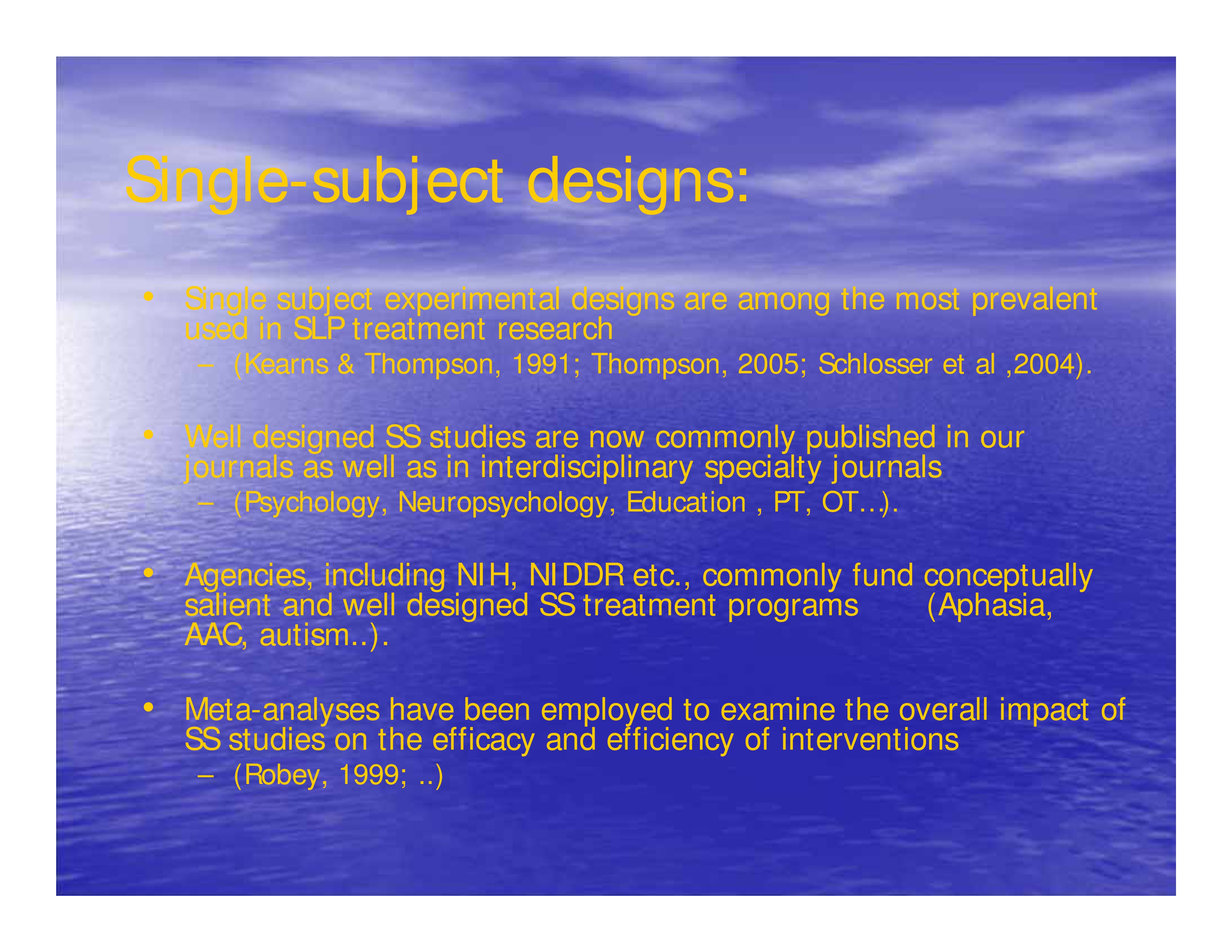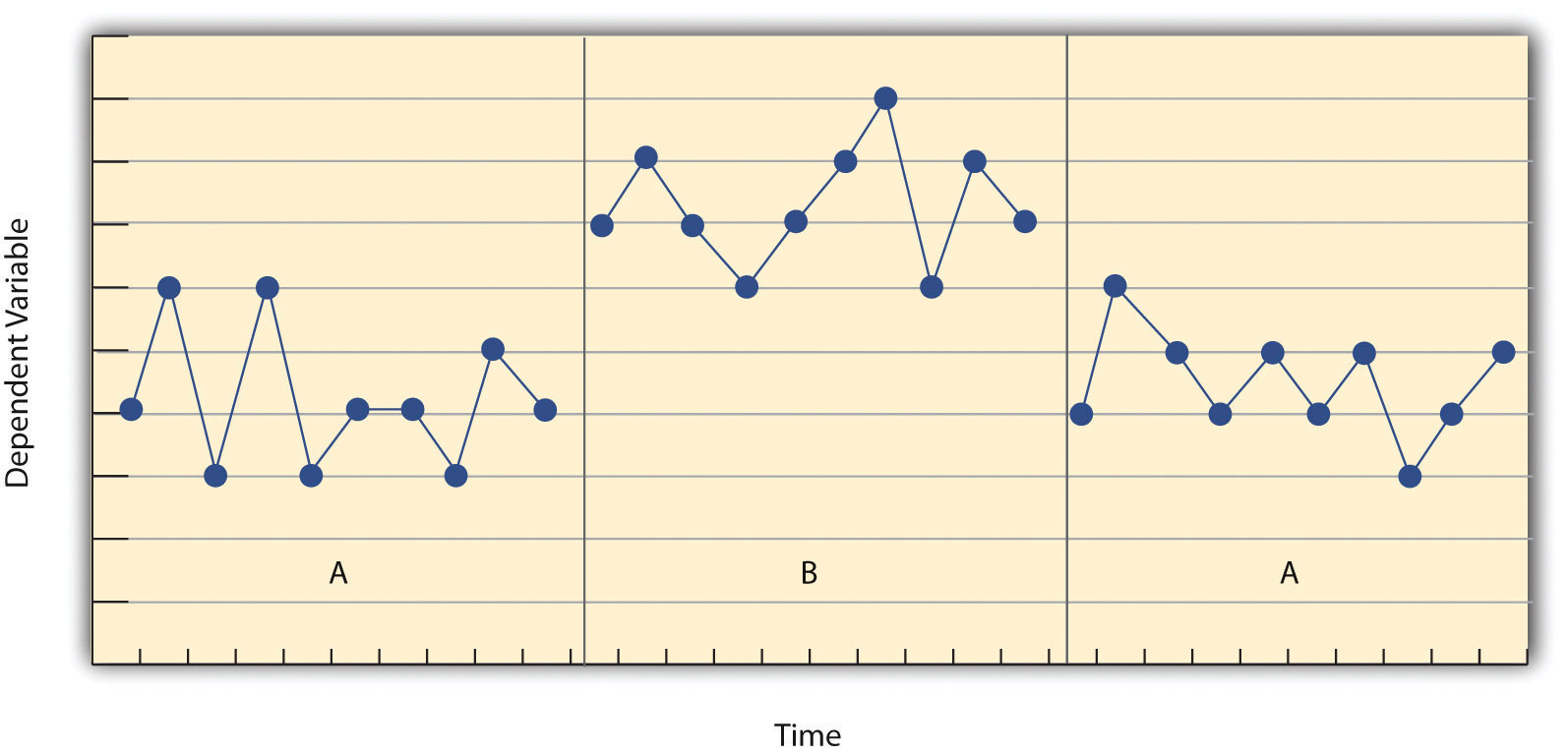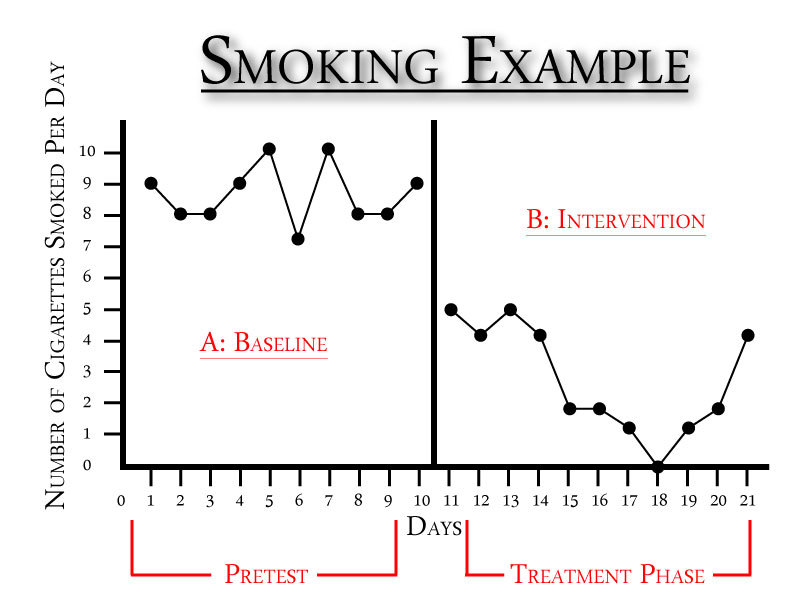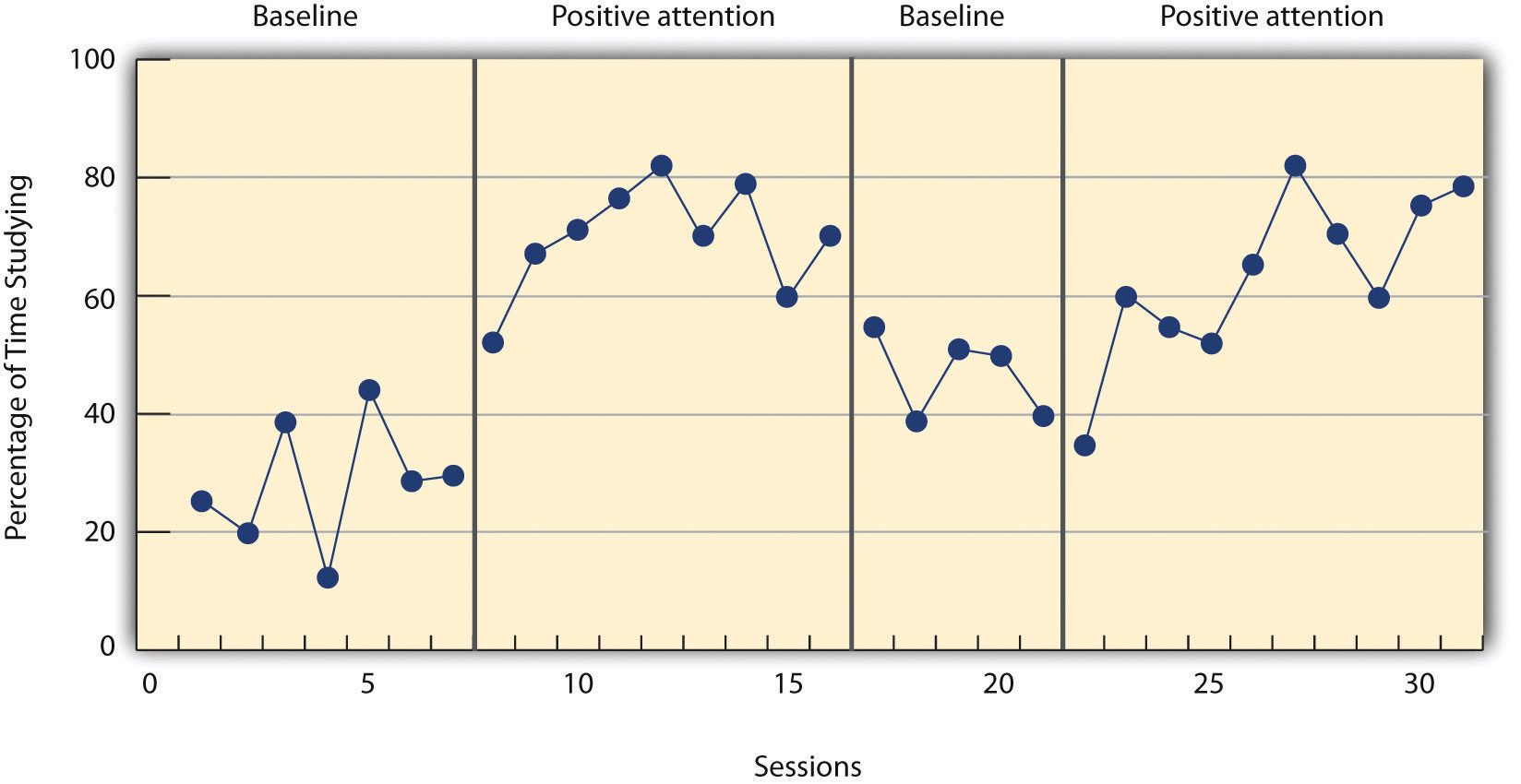Instead it depends on the participants behavior. This research design is a prevailing and practical tool that is applicable for assessing interventions with the participant seeking specific habitual behavioral changes under a given set of circumstances monitoring SSB intake.

Use Of The Single Subject Design For Practice Based Primary Care Research Postgraduate Medical Journal
Another important aspect of single-subject research is that the change from one condition to the next does not usually occur after a fixed amount of time or number of observations.

. Indexes more than 2500 journals. Examples of Single-Subject Research from the Literature Note that each of these studies has more than one participant but in each study they were analyzed separately as in single subject designs. The BCBC Design the Multiple-Component Design Used to compare the relative effectiveness of two different treatment.
Trend An ascending or descending line. The type of disruptive behaviour which becomes the target behaviour in this research is physical aggression against classmates. Example use of a homeless shelter may be cyclical depending on the time of year with increased use in winter months and lower use in summer months.
Single subject research designs are weak when it comes to external validityStudies involving single-subject designs that show a particular treatment to be effective in changing behavior must rely on replicationacross individuals rather than groupsif such results are be found worthy of generalization Fraenkel Wallen 2006 p. Also called the. Use of the ABA design factors to be evaluated treatment variables implementation of the research design data.
Evaluation Of A Single Subject Design Of Research Essay 1137 Words 5 Pages. Single-Subject Designs Characterized by scientific rigor Can demonstrate causal relations Experimental design Effects of different interventions IVs on the same subject Problems that are relatively rare can be studied. The most basic single-subject research design is the.
Figure 101 Results of a Generic Single-Subject Study Illustrating Several Principles of Single-Subject Research. The y -axis is the measure of the problem were trying to change ie the dependent variable. One way to analyze the data from a single-subjects design is to visually examine a graphical representation of the results.
Single-subject research design has been described as any research involving one subject or one group that is treated as a single entity Hittleman Simon 1997. Reed Godden 1977. Research similar to these examples will help school counselors provide documentation of accountability efforts.
Advantages of the single-subject approach Those who use the single-subject approach find it both a powerful and satisfying research method. For example single-subject design can be implemented prior to implementing a randomized controlled trial to get a better handle on the magnitude of the effects the workings of the active ingredients and all of that. Single Subject 5 3.
Single-subject researchwhich involves testing a small number of participants and focusing intensively on the behavior of each individualis an important alternative to group research in psychology. The most basic single-subject research design is the. The use of single subject research to identify evidence.
An example of a graph from a single-subjects design is shown in Figure 111. PsycInfo is a key database in the field of psychology. Martin.
Limitations Of course single-subject research designs also have clear limitations that must be considered. Wolery M. Statistical or methodological problems are avoided or remedied through the use of single-case research designs.
In design of experiments single-subject design or single-case research design is a research design most often used in applied fields of psychology education and human behavior in which the subject serves as hisher own control rather than using another individualgroup. Group designs single-subject designs Both approaches apply components of the scientific method to their approach to research The difference between group and single-subject designs lies in the manner in which the. During the first phase A a is established for the dependent variable.
Methodology A single-subject design of research was utilized. Single-subject studies must be distinguished from qualitative research on a single person or small number of individuals. The use of single-subject experimental designs SSEDs has a rich history in communication sciences and disorders CSD research.
The x -axis is time as measured in months. It can include additional treatment conditions and returns to baseline. Basically single-subject designs focus on a single individual in a research sample Alberto Troutman 1990 are the extension of the quasi-experimental studies time-series designs.
Also called the ABA design. A single-subject research design that begins with a baseline condition with no treatment followed by the introduction of a treatment and after that a return to the baseline condition. The approach for this experimental research is Single Subject Research SSR with A-B-A Baseline-1-Intervention-Baseline-2 design.
Examples of Single-Subject Research from the Literature Note that each of these studies has more than one participant but in each study they were analyzed separately as in single subject designs. This is the level of responding before any treatment is introduced and therefore the baseline phase is a kind of control condition. The following paper presents the use of an ABA single subject research design in evaluating a 16 year old foster youths behavior and the use of an intervention on decreasing negative behavior and increasing positive behavior.
Using repeated observations the effect of an intervention. The experimenter knows relatively soon whether the treatment is working or not. The simplest reversal design in which there is a baseline.
This research used quantitative approach with experimental research design. The limitation most often cited in discussions of single-subject research designs is a lack of generality of obtained effects. A number of important studies dating back to the 1960s and 1970s investigated fluency treatments using SSED approaches eg Hanson 1978.
Also called the ABA design. Single Subject Designs There are two broadly defined approaches to experimental research. Single-subject studies must be distinguished from case studies in which an individual case is described in detail.
Haroldson Martin. CHAPTER 7 Single-Subject Design 209 Stable line A line that is relatively flat with little variability in the scores so that the scores fall in a narrow band. Includes information of use to psychologists students and professionals in related fields such as psychiatry management business and education social science neuroscience law medicine and social work.
G Churchill R. One reason for this is that the method provides feedback quickly to the investigator about the effects of the treatment conditions. Single-subject researchwhich involves testing a small number of participants and focusing intensively on the behavior of each individualis an important alternative to group research in psychology.
Additionally what is a quasi experimental study design.
Single Subject Research Designs Research Methods In Psychology 2nd Canadian Edition

Issues In Single Subject Research Asha Journals Academy

Single Subject Research Designs

Single System Design Studies Jacob R Campbell

The Use Of Single Subject Designs In Psychology Psucd8

Pdf Single Subject Research Designs For Disability Research
Single Subject Research Educational Research Basics By Del Siegle

0 comments
Post a Comment